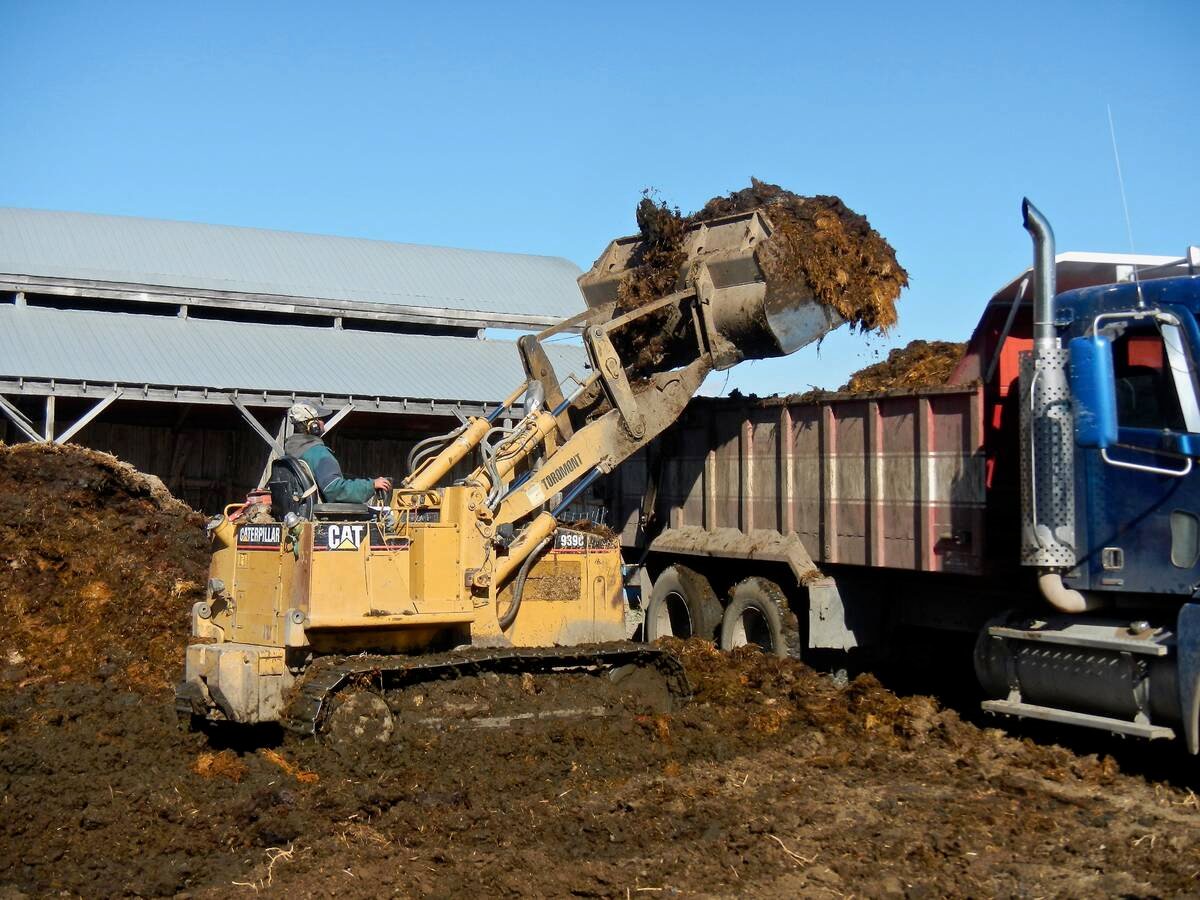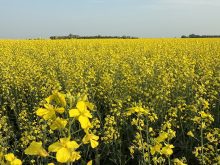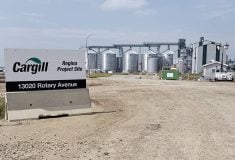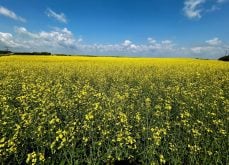Canadian farms could significantly reduce greenhouse gas emissions while generating renewable energy by convertingagricultural waste into biogas, a McGill University doctoral student says.
Anjaly Paul said anaerobic digestion could transform livestock manure and crop residues that would otherwise decompose inlandfills into valuable resources.
“What if we could use these leftovers to power a greenhouse, fuel a tractor or even replace synthetic fertilizers with organicones?”
Canada’s agriculture sector is being pushed by both consumers and policy makers to reduce greenhouse gas emissions. Muchof that conversation has centred around farm efficiency, from 4R fertilizer management and precision agriculture to newproducts such as methane-reducing feed additive Bovaer or green ammonia production.
Read Also
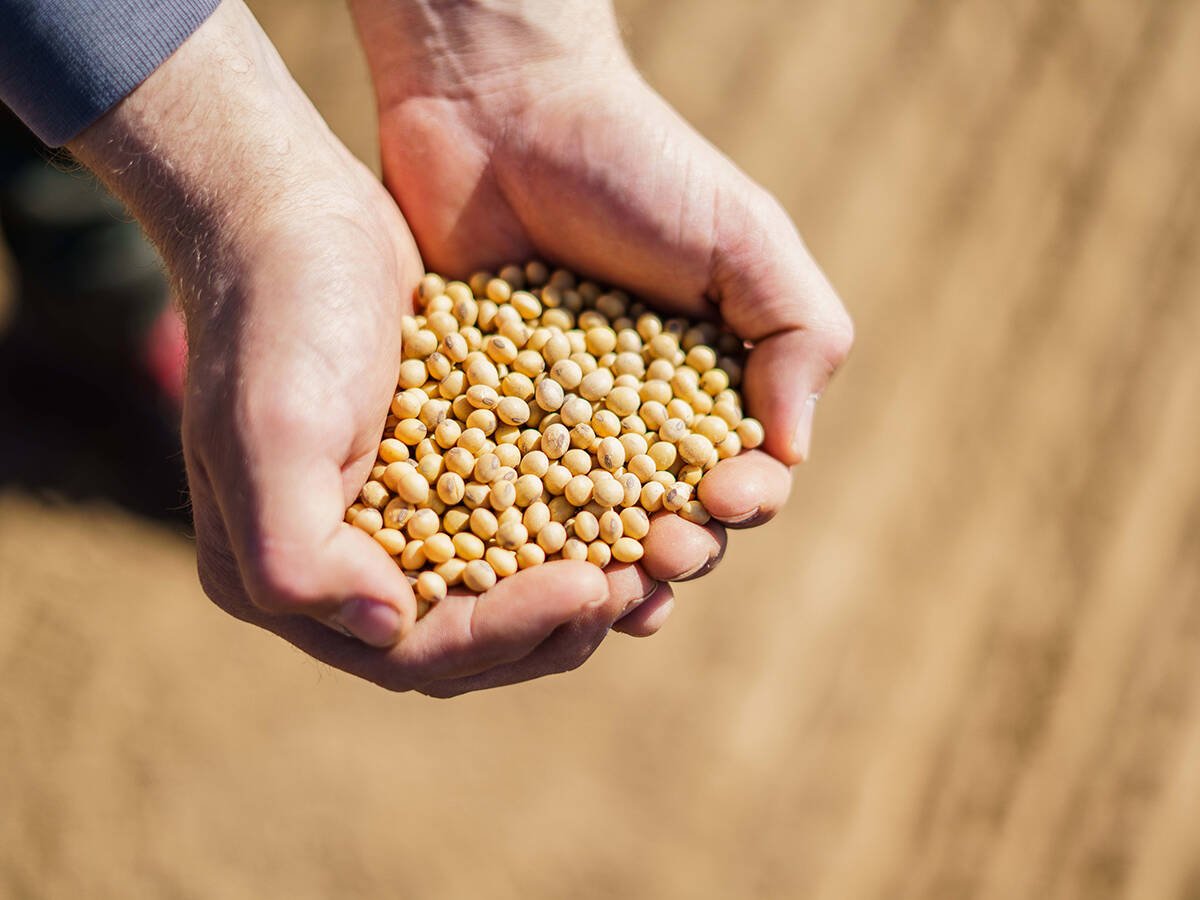
U.S. government investigates high input costs
The USDA and DOJ are investigating high input costs, but nothing is happening in Canada.
However, Statistics Canada still counts agriculture among the nation’s emissions drivers. Emissions were up between 1990and 2023, primarily due to increases in the oil and gas, transport and agriculture sectors, the agency reported.
Paul said anaerobic digesters could turn an environmental problem, such as manure and crop waste, into an environmentalwin.
In 2011, Canadian livestock produced almost 152 million tonnes of manure, with cattle accounting for 84 per cent, pigs eightper cent and poultry three per cent, Paul said. There’s also biological material from animal carcasses.
Outside of livestock, around 13 per cent of the fruit and vegetables produced in Canada are left unharvested, according to a2019 report from Environment and Climate Change Canada. Some parts of produce, such as the seeds and less edible bits,are thrown out. Food processing businesses produce a lot of waste, despite efforts to divert those byproducts into usefulstreams such as livestock feed.
All of that also contributes to methane when biological material decomposes in landfills.
The anaerobic digestion process involves bacteria decomposing organic waste in environments without oxygen. The biogasgenerated is made up primarily of methane and carbon dioxide. The gas can be purified into biomethane and used for heatingand electricity on farms.
“Anaerobic digestion process helps in capturing the methane, otherwise emitted through the decomposition of wastematerials in the landfills and helps in reducing global warming,” Paul said at a June 10 virtual forum hosted by Quebec’sSherbrooke Research and Development Centre.
The process also produces digestate, a nutrient-rich slurry that can replace synthetic fertilizers. Paul described it as an“odour-free fertilizer” that can improve soil texture and health while acting as a nutrient boost for plant growth.
It boosts the economy and sustainability, Paul added, by taking waste from farms and returning energy and nutrients back tothem.
“It’s an eco-friendly solution compared to the synthetic fertilizers that we use in our farms,” she said.
Anaerobic digestion isn’t a new concept for farmers, although some sectors have less than pleasant associations with thephrase.
Provincial regulations previously required new or expanded hog barns in Manitoba to have such a digester (or equivalenttechnology) to manage manure. The hog sector argued that it made building projects prohibitively expensive, and theycelebrated when the requirement was lifted in 2017.
Paul’s research at McGill focuses on low-temperature anaerobic digestion, which operates at 15 to 25 C using micro-organisms adapted for those conditions. These bacteria have special proteins and cellular membrane changes that help themsurvive in low temperatures.
This approach requires less energy than other forms of anaerobic digestion done at 30 to 55 C, making it more suitable forCanada’s temperate climate, Paul said. The low-temperature process is also more stable, with lower ammonia production andless volatile fatty acid accumulation.
Her studies have shown the technology can reduce methane emissions from stored manure by up to 70 per cent. Methaneemissions from manure storage double with every five-degree temperature increase during hot summer months.
“In a study, it was reported that about 16 to 84 kilograms carbon dioxide equivalent methane are produced per ton of storedmanure,” Paul said.
Different agricultural materials produce varying amounts of biogas. Paul’s research shows hog manure produces 400 to 500millilitres of methane per gram of volatile solids, while dairy manure generates 300 to 400 millilitres.
A good quality biogas should contain 65 to 70 per cent methane, she added.
Paul’s research team tested the process on manure from 12 farms. They found that while specific methane yield was similaracross sites, biogas production varied depending on bedding materials, additives and enzymes present in the manure.
The team also compared methane emissions from stored raw manure versus digestate (remaining material after anaerobicdigestion). Their study showed that methane emissions from digestate reached a plateau during long-term storage, whileemissions from raw manure continued to gradually increase.
The digestate byproduct offers additional value, Paul said. Her research has successfully recovered more than 95 per cent ofnitrogen from digestate using phosphorus salts to create struvite, a magnesium-ammonium-phosphate compound valuableas a slow-release fertilizer.
The digestate can be separated into liquid and solid, with liquid used as organic fertilizer and solids turned to beddingmaterial for cattle or in horticultural products such as potting soil.
The technology faces challenges with certain materials. Paul’s experiments with apple pomace, a waste product from juiceproduction, showed very low biogas production and problematic acid accumulation when the material comprised 25 to 33 percent of the substrate.
Paul is currently looking for improvements. These include pre-treating materials with thermal, chemical, mechanical orbiological methods to speed up the breakdown process, particularly for tough materials such as corn stalks.
Co-digestion or mixing different waste materials such as manure and food waste, can improve nutrient balance and achievethe optimal 25-to-one carbon-nitrogen ratio needed for effective anaerobic digestion, she said. Adding carbon-rich materialssuch as biochar can improve biogas production by 40 to 50 per cent while enhancing microbial activity and reducing toxicinhibitors.
Another promising idea is the use of bio-augmentation — adding in more microbes specifically chosen for their ability to helpin some aspect of the process and that are adapted to stressful conditions. This could include lignin-reducing bacteria fortreating lignin-rich materials or psychrophiles adapted to low temperatures, she said.
Paul’s work can be tied to federal goals such as reaching net-zero emissions by 2050 or increasing renewable electricitygeneration from 80 to 90 per cent by 2030, Paul said. The Quebec government has also set targets to supply 10 per centrenewable natural gas in the gas network and achieve a 50 per cent increase in bioenergy production by 2030.
The World Biogas Association also notes anaerobic digestion as a support for some United Nations sustainable developmentgoals. The technology is sophisticated enough to be used by NASA and the European Space Agency for waste managementand energy recovery in space stations, she added.
Beyond environmental benefits, Paul believes there is real economic potential for farmers.
“Anaerobic digestion can also enhance the agro-economic value of the products,” she said.
“These waste materials are otherwise just wasted in the farms. If we could use this to produce biogas, digestate and othervalue-added products, it can increase the economic value of the waste materials, and it can act as an extra income for thefarmers.


